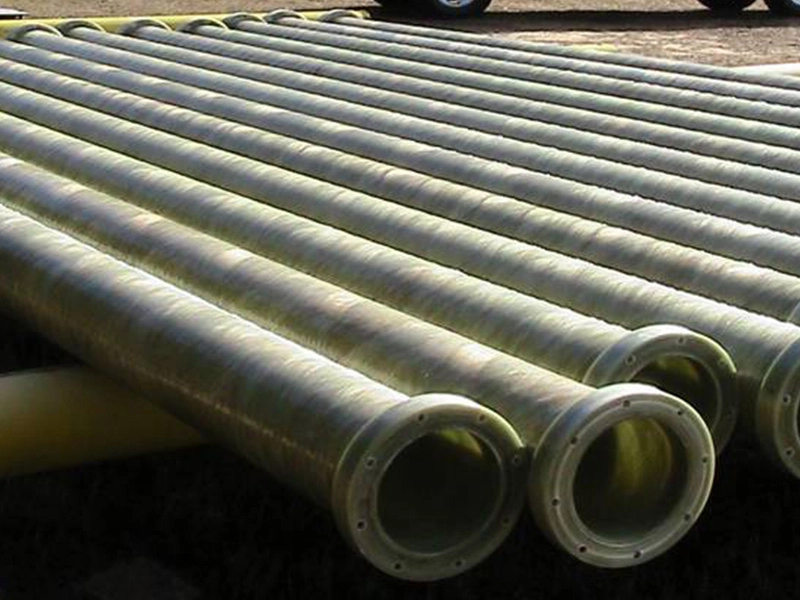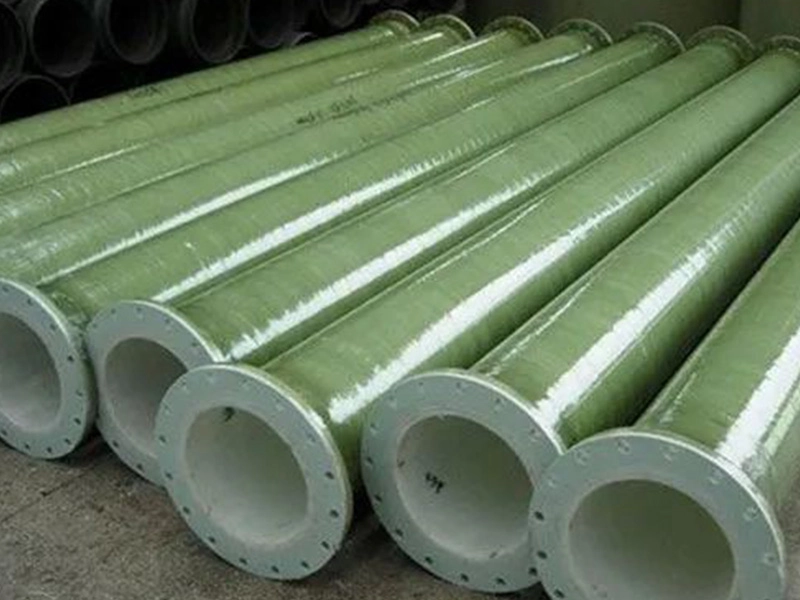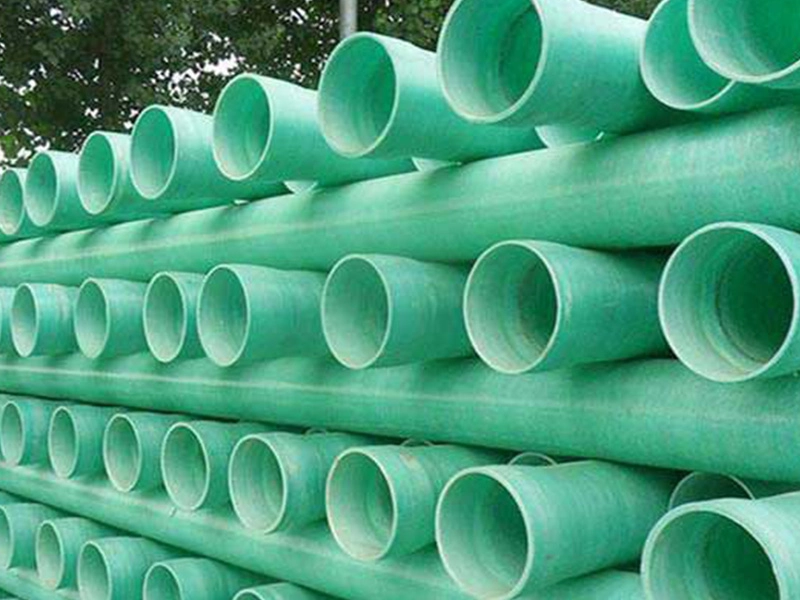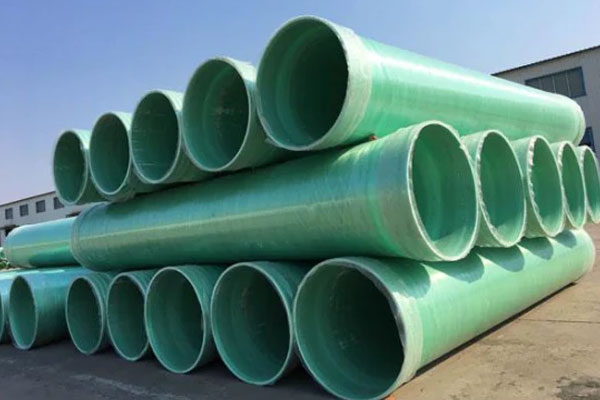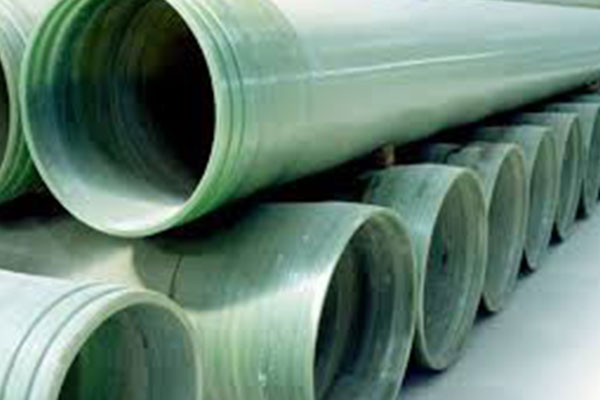FRP pipe is a pipe manufactured of FRP material by contact molding or filament winding method. Various types of resins like thermosetting polyester, epoxy, phenolic resin, etc are used to get specific FRP pipe properties in the final product. The most widely used reinforcement is the fiberglass.
Product performance introduction
Fiberglass filament wound pipe, also known as FRP (Fiber-Reinforced Polymer) pipe, is a type of composite pipe made from a combination of fiberglass reinforcement and a polymer resin. The pipe is manufactured using a process called filament winding, where continuous fiberglass filaments are wound around a mandrel in a specific pattern to create the desired shape and thickness.
Here are some of the key characteristics and advantages of fiberglass filament wound pipes:
Manufacturing Process:
- The process begins with the preparation of the mandrel, which is a metal core that will shape the pipe.
- The fiberglass filaments are wound around the mandrel in a specific pattern, such as helical or circumferential, to achieve the desired strength and stiffness.
- The filaments are saturated with a polymer resin, which is then cured under heat and pressure to form a strong bond between the fibers and the resin.
- The pipe is then removed from the mandrel, and any excess resin is trimmed from the ends.
Characteristics:
- Corrosion Resistance: Fiberglass filament wound pipes are highly resistant to corrosion from chemicals, seawater, and other corrosive substances.
- High Strength-to-Weight Ratio: FRP pipes have a high strength-to-weight ratio, making them ideal for applications where weight reduction is critical.
- Low Maintenance: FRP pipes are resistant to scaling, pitting, and abrasion, reducing the need for maintenance and repairs.
- Chemical Resistance: FRP pipes are resistant to a wide range of chemicals, including acids, alkalis, and organic solvents.
- Electrical and Thermal Insulation: FRP pipes are electrically and thermally insulating, making them suitable for applications where electrical or heat insulation is necessary.
- Non-Conductive: FRP pipes are non-conductive, reducing the risk of electrical shock or corrosion due to electrical currents.
Applications:
- Oil and Gas: FRP pipes are used in the oil and gas industry for transportation of crude oil, natural gas, and petrochemicals.
- Chemical Processing: FRP pipes are used in chemical processing plants for the transportation of corrosive substances.
- Water and Wastewater: FRP pipes are used in water and wastewater treatment plants for the transportation of water and wastewater.
- Marine Applications: FRP pipes are used in marine applications, such as seawater intake and outfall pipes, due to their corrosion resistance and ability to withstand harsh marine environments.
- Pulp and Paper: FRP pipes are used in the pulp and paper industry for the transportation of chemicals and wastewater.
Advantages:
- Cost-Effective: FRP pipes are often less expensive than traditional metal pipes.
- Long Service Life: FRP pipes can last for decades with minimal maintenance.
- Low Installation Costs: FRP pipes are lightweight and easy to handle, reducing installation costs.
- Easy Repair: FRP pipes can be easily repaired in the field, reducing downtime and maintenance costs.
Overall, fiberglass filament wound pipes offer a unique combination of corrosion resistance, high strength, and low maintenance, making them an attractive option for a wide range of industrial applications.
Here are some common parameters associated with fiberglass filament wound pipes:
1. Pipe Diameter:
- Nominal diameter: 1" to 144" (25 mm to 3650 mm)
- Inner diameter (ID): 1" to 140" (25 mm to 3550 mm)
- Outer diameter (OD): 1.5" to 144" (38 mm to 3650 mm)
2. Wall Thickness:
- Minimum wall thickness: 1/8" (3 mm)
- Maximum wall thickness: 2" (51 mm)
- Typical wall thickness: 1/4" to 1" (6 mm to 25 mm)
3. Length:
- Standard lengths: 20 ft (6.1 m) to 40 ft (12.2 m)
- Custom lengths: up to 60 ft (18.3 m) or more
4. Material Properties:
- Tensile strength: 10,000 to 50,000 psi (69 to 345 bar)
- Flexural strength: 10,000 to 30,000 psi (69 to 207 bar)
- Compressive strength: 5,000 to 20,000 psi (34 to 138 bar)
- Modulus of elasticity: 100,000 to 500,000 psi (689 to 3,448 bar)
5. Fiber Orientation:
- Helical winding: ±30° to ±70°
- Circumferential winding: 0° to 20°
- Combination of helical and circumferential winding
6. Fiber Content:
- Fiberglass content: 30% to 70% by weight
- Resin content: 30% to 70% by weight
7. Resin System:
- Thermoset resins: epoxy, polyester, vinyl ester
- Thermoplastic resins: polyethylene, polypropylene, PVC
8. Pipe End Configurations:
- Open ended
- Flanged
- Threaded
- Socket and spigot
- Butt-welded
9. Surface Finish:
- Smooth
- Textured
- Coated (e.g., epoxy, polyurethane)
10. Certifications and Standards:
- ASTM D3839 (Standard Specification for Fiberglass Pipe)
- ASME B31.3 (Process Piping)
- API 15LR (Specification for Fiberglass Line Pipe)
- ISO 14692 (Petroleum and natural gas industries — Glass-reinforced plastic (GRP) piping)
These parameters can vary depending on the manufacturer, application, and specific requirements of the project. It's essential to consult with the manufacturer or supplier to determine the specific parameters of the fiberglass filament wound pipe for a particular application.
High-pressure fiberglass filament wound pipe
Series :
FRP Pipe >application
Sewer Interceptors,Water Supply,Force Mains,Outfalls,Industrial Effluents,Salt Water Lines,Chemical Process Lines,WWTP Piping,Odor Control Piping,Irrigation,Cooling Water,Potable Water,Penstocks,Storm Water.
FAQ
Q :
Can the product size be customized?
A :
Yes, the product size can be customized
Q :
How long it will take to produce the product ?
A :
It depends on the quantity
Other related products

